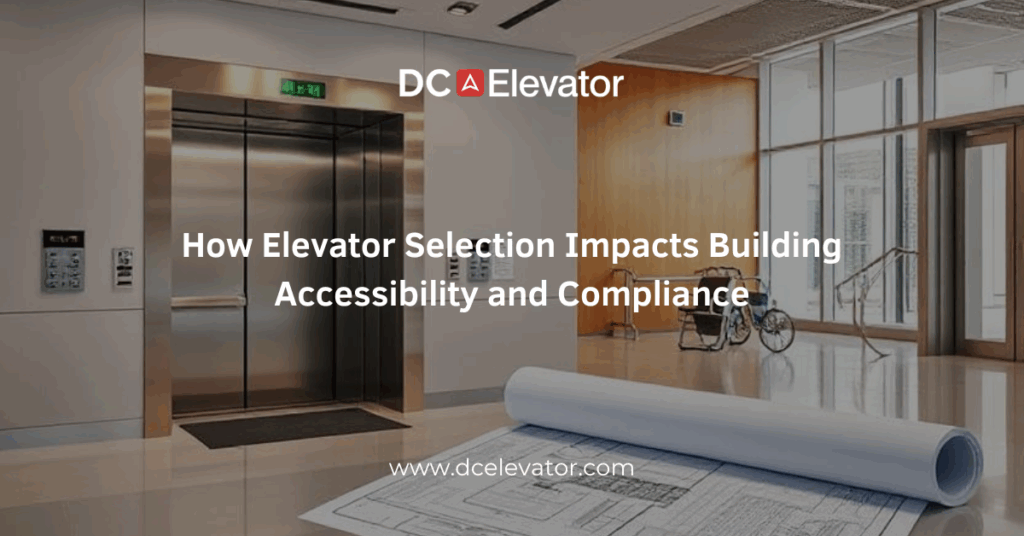Did you know that elevator selection can directly affect whether your building meets ADA and local code requirements? For property owners, developers, and facility managers, choosing the right elevator isn’t just a design choice—it’s a legal and functional necessity.
Whether you’re constructing a new commercial property, renovating an existing structure, or upgrading for better access, the elevator system you select plays a vital role in ensuring your building is usable and compliant for all occupants. Elevators are more than transportation tools—they’re key to accessibility and inclusivity.
In this post, we’ll explore how the type, size, and placement of elevators influence compliance with accessibility regulations and why early coordination during planning matters.
Understanding Accessibility Requirements
ADA Compliance and Local Codes
The Americans with Disabilities Act (ADA) mandates that public buildings be accessible to individuals with disabilities. This includes specifications for elevator car dimensions, control panel height, audible signals, and door timing.
Elevator selection must align with:
-
Minimum car size for wheelchair users
-
Reach ranges for buttons and keypads
-
Visual and auditory indicators
-
Door clearance and timing
-
Proper signage and emergency communication
Ignoring these requirements can result in failed inspections, occupancy delays, and even legal penalties. Working with an elevator contractor that understands these regulations ensures your project stays on track and avoids costly rework.
How Elevator Type Affects Compliance
Hydraulic vs. Traction Elevators
Each building presents unique challenges. For low- to mid-rise buildings, hydraulic elevators are often cost-effective and easier to install. However, they require a larger footprint and pit depth, which must be accounted for in design stages.
Machine room-less (MRL) traction elevators are ideal for mid- to high-rise structures and offer more flexibility in shaft dimensions. Still, selecting an MRL system must be weighed against code requirements related to door timing, ride smoothness, and power backup systems.
Key takeaway: Elevator type directly influences your ability to meet accessibility codes. Consulting with professionals early in the planning phase helps ensure compliance without compromising building functionality.
Designing with Accessibility in Mind
Beyond the Cab: Placement and Traffic Flow
Even if your elevator meets ADA technical requirements, poor placement within the building can hinder true accessibility. For example:
-
Is the elevator centrally located for equal access across floors?
-
Are there clear, accessible pathways to and from the elevator lobby?
-
Is the elevator close to accessible entrances and restrooms?
These questions are often overlooked during design, resulting in retrofits or navigation challenges for users. A thoughtful elevator layout enhances both usability and occupant satisfaction—especially in healthcare, education, or public service buildings.
The Cost of Non-Compliance
Non-compliance isn’t just a checklist issue—it can cause:
-
Delays in obtaining occupancy permits
-
Fines or lawsuits related to discrimination
-
Tenant dissatisfaction or increased vacancy
Making the right elevator decision at the outset protects your investment and reputation. Elevators should be planned not just for code, but for real-world usability and long-term performance.
Conclusion
Elevators are one of the most critical components in designing accessible, code-compliant buildings. From choosing the right model to ensuring proper placement and features, early coordination is key to success.
If you’re navigating elevator selection for a new build or renovation, our team can help ensure you meet both accessibility standards and project goals.
Contact us to discuss how your elevator choice can impact building compliance, and let’s ensure your facility is safe, inclusive, and ready for inspection.
